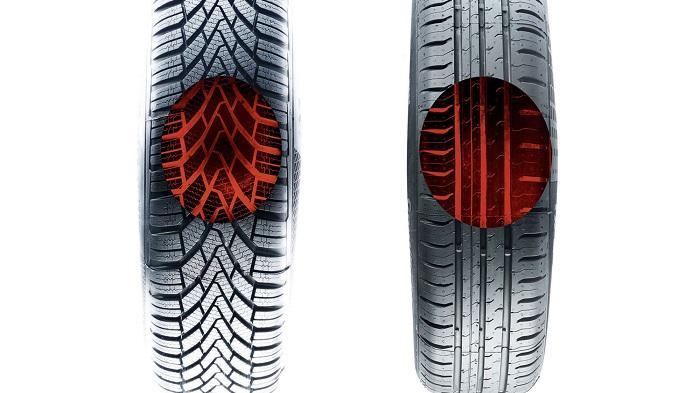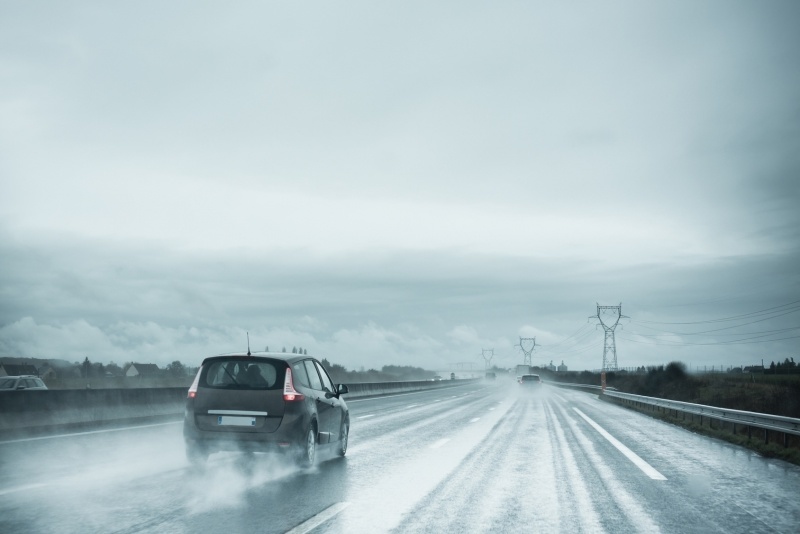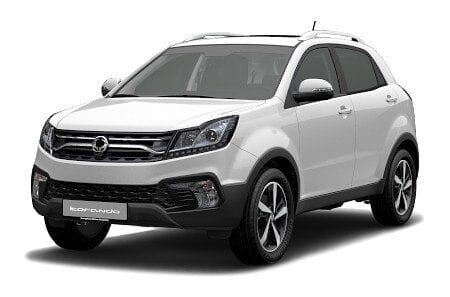
Driving in winter with summer tires. It's safe?
Content
 Poland is the only EU country with such a climate, where the regulations do not provide for the requirement to drive on winter or all-season tires in autumn-winter conditions. However, Polish drivers are ready for this - as many as 82% of respondents support this. However, declarations alone are not enough - with such high support for the introduction of mandatory seasonal tire replacement, workshop observations still show that as much as 1/3, i.e. about 6 million drivers use summer tires in winter.
Poland is the only EU country with such a climate, where the regulations do not provide for the requirement to drive on winter or all-season tires in autumn-winter conditions. However, Polish drivers are ready for this - as many as 82% of respondents support this. However, declarations alone are not enough - with such high support for the introduction of mandatory seasonal tire replacement, workshop observations still show that as much as 1/3, i.e. about 6 million drivers use summer tires in winter.
This suggests that there should be clear rules - from what date such tires should be installed on a car. Poland not only cannot catch up with Europe in road safety, Europe is constantly running away from us in the race for road safety. Every year for several decades more than 3000 people die on Polish roads and almost half a million accidents and traffic accidents occur. For this data, we all pay bills with rising insurance rates.
It is not obligatory to change tires for winter ones in Poland.
– Since the obligation to wear seat belts was introduced, i.e. situations after the collision have been resolved, why have not the causes of these collisions been eliminated yet? Almost 20-25% of them are related to tires! In a situation where we influence others with our behavior and it can have disastrous consequences due to the speed or weight of the car, there should be no freedom. It is very puzzling that the following relationships are not connected in the mind: driving in winter on tires with winter tolerance - i.e. winter or all-season tires - the probability of an accident is 46% lower, and the number of accidents is 4-5% lower! points out Piotr Sarnecki, CEO of the Polish Tire Industry Association (PZPO).
In Poland, we have the highest number of traffic accidents in the European Union. The introduction of a clear period of driving on winter or all-season tires will reduce the number of accidents by more than 1000 per year, not counting bumps! Drivers and passengers will be safer and healthcare will be less busy. This simple comparison is clear to the governments of all countries around Poland. We are in Europe
the only country with such a climate where there is no regulation on this issue. Even southern countries with much warmer climates such as Slovenia, Croatia or Spain have such rules. It's even weirder when you look at the research - as many as 82% of active drivers support the introduction of a requirement to drive on winter or all-season tires in the winter. So what prevents these rules from being introduced? How many more accidents and huge traffic jams will we see in the winter because of this omission?
See also: How to save fuel?
In all countries where winter tires are required, this also applies to all-season tyres. Only the introduction of a legal requirement for winter tires can curb the recklessness of some drivers who drive in the middle of winter on summer tires.
In the 27 European countries that have introduced the requirement to drive with winter tires, there was an average 46% reduction in the likelihood of a traffic accident compared to driving with summer tires in winter conditions, according to a European Commission study on certain aspects of tires. safety-related use 3. This report also proves that the introduction of the legal requirement to drive with winter tires reduces the number of fatal accidents by 3% - and this is only on average, as there are countries that recorded a decrease in the number of accidents by 20 %.
“Just careful driving is not enough. We are not alone on the road. So if we are going well and safely, if others are not. And they may collide with us because they will not have time to slow down on a slippery road. There should not be so much freedom in a situation where we influence others with our behavior and this can have disastrous consequences due to the speed or weight of the car. Everyone explains differently why they still haven't changed tires in December or January. It’s time for someone to wear winter tires only when the snow is ankle-deep, or it’s -5 degrees C outside. Someone else will say that they only drive around the city, so they will ride on winter tires with a tread of 2 mm. All these are very dangerous situations, - adds Piotr Sarnetsky.
Winter driving with summer tires
Why does the introduction of such a requirement change everything? Because drivers have a clearly defined deadline, and they do not need to puzzle over whether to change tires or not. In Poland, this weather date is December 1st. Since then, the temperature throughout the country is below 5-7 degrees C - and this is the limit when the good grip of summer tires ends.
Summer tires do not provide proper car grip even on dry roads at temperatures below 7ºC - then the rubber compound in their tread hardens, which worsens traction, especially on wet, slippery roads. The braking distance is longer and the ability to transmit torque to the road surface is significantly reduced4.
The tread compound of winter and all-season tires is softer and, thanks to silica, does not harden at lower temperatures. This means that they do not lose elasticity and have better grip than summer tires at low temperatures, even on dry roads, in rain and especially on snow.
What do the tests show?
Auto Express and RAC test records on winter tires show how tires that are adequate to temperature, humidity and slippery surfaces help the driver to drive and confirm the difference between winter and summer tires not only on snowy roads, but also on wet ones. roads cool autumn and winter temperatures:
• On a snowy road at a speed of 48 km/h, a car with winter tires will brake a car with summer tires by as much as 31 meters!
• On wet roads at a speed of 80 km/h and a temperature of +6°C, the stopping distance of a car with summer tires was as much as 7 meters longer than that of a car with winter tires. The most popular cars are just over 4 meters long. When the car with winter tires stopped, the car with summer tires was still traveling at over 32 km/h.
• On a wet road at a speed of 90 km/h and a temperature of +2°C, the stopping distance of a vehicle with summer tires was as much as 11 meters longer than that of a vehicle with winter tires.
Tire approval
Remember that approved winter and all-season tires are tires with the so-called Alpine symbol - a snowflake against a mountain. The M+S symbol, which is still on tires today, is only a description of the suitability of the tread for mud and snow, but tire manufacturers give it at their discretion. Tires with only M+S but no snowflake symbol on the mountain do not have a softer winter rubber compound, which is crucial in cold conditions. A self-contained M+S without the Alpine symbol means that the tire is neither winter nor all-season.
See also: This is what the new Ford Transit L5 looks like
